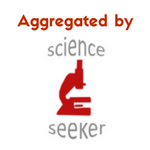.

The gold electrodes printed on this thin bandage measure the flow of electricity in the underlying tissue by impedance spectroscopy. (Photo courtesy: UC Berkeley news centre)
Some of my fond memories of childhood are from the times that my great grandma and grandpa visited us. They told us sweet stories and shared memories of much simpler times. But they had worries too. I vividly remember that one of my great grandmother’s main fears was to live to an old age, but be limited to bed. ‘Madar joon’ had seen friends who, due to stroke or other illnesses, were confined to bed and had witnessed, firsthand, their pain and discomfort from developing bedsores. Madar joon died suddenly of a brain stroke at the age of 75 and never had to experience the pain of bedsores.
Bedsores: a “silent epidemic”
Last March, I saw a news release from my alma mater, UC Berkeley. It was titled “smart bandage detects bedsores before they are visible to doctors,” by Sarah Yang. Nostalgic thoughts of Madar joon were triggered in my mind and I became curious to read more about this problem and the solution.
According to mayoclinic.org, bedsores, or pressure ulcers, are chronic wounds that develop due to injuries to the skin and the underlying tissue that are caused by prolonged pressure on the skin. They mostly happen in areas where skin is covering bone with little or no muscle and fat padding, such as heels, ankles, hips, and tailbone. Those at risk of developing pressure ulcers are typically patients who have a medical condition that limits their ability to move and requires them to use wheelchairs or be confined to beds.
The prevalence of pressure ulcers has increased so much in recent years that they have been described as a “threat to public health.” In the U.S. alone, 2.5 million patients are affected and it costs an estimated $11 billion to treat them. Also, there is a high morbidity rate associated with these wounds, according to a study from UCLA: the odds of a patient dying in hospital due to septic infections associated with bedsores are 2.8 times higher when the patient has a pressure ulcer. The untimely death of the actor Christopher Reeve, best known for playing “Superman,” was due to an infected pressure ulcer, secondary to spinal cord injury.
In order to alleviate prolonged pressure on the skin, the nurse and/or caretaker has to move the patient and roll them from side to side every half hour. This vigilance also helps in detecting the ulcers early. But by the time an ulcer is visible to the eye, there is severe tissue damage going on beneath the skin, which makes them very hard to treat especially in the elderly population.
The ‘smart bandage’ as solution
Early detection of tissue damage can significantly enhance the chances of treatment. Bioengineering professor Michel Maharbiz, and his team at UC Berkeley in collaboration with colleagues at UC San Francisco, has developed a small flexible electric device, as thin as a bandage, that can be attached to the skin and detect early signs of tissue damage.
“We set out to create a type of bandage that could detect bedsores as they are forming, before the damage reaches the surface of the skin,” said Maharbiz in the UC Berkeley news release. (All subsequent quotes also come from this article.) He thinks such a device can be “carried by a nurse for spot-checking target areas on a patient, or it could be incorporated into a wound dressing to regularly monitor how it’s healing.”
Dr. Michael Harrison, a professor of surgery at UCSF and a co-investigator of the study adds, “the genius of this device is that it’s looking at the electrical properties of the tissue to assess damage.” According to him, “many people have been trying to solve this problem in the last 50 years.”
How does this “smart bandage” work?
From my understanding of the article that was published in Nature Communications, this smart bandage is a thin (35 μm) polyethylene naphtalate substrate that has gold electrodes printed on it. When attached to the skin this device measures the flow of electricity in the underlying tissue through a method called impedance spectroscopy.
A healthy and normal cell will store electric current, similar to a capacitor in the electric field. But the minute the cell starts to die, the integrity of it will change which results in a leakage of electric current. When attached to the skin, this device measures and detects the differences in the frequency of the electric current in the underlying tissues. One can predict the occurrence of damage by comparing the measured values to those of a normal tissue.
The researchers tested this non-invasive device in pressure ulcer models in rats and observed that the smart bandage was able to detect variable degrees of tissue damage consistently across multiple animals. “Our device is a comprehensive demonstration that tissue health in a living organism can be locally mapped using impedance spectroscopy,” said the study’s lead author, Sarah Swisher, a PhD candidate in electrical engineering and computer sciences at UC Berkeley.
According to the authors of the paper, additional studies are happening to determine clinically relevant threshold values that indicate tissue damage in human patients. And it won’t be too long before such devices are used in clinical settings. Study co-author Dr. David Young, UCSF professor of surgery, is now heading up a clinical trial of this bandage.
Other products:
As I was researching this interesting bandage, I came across various other products with the same name but different functionalities. Interestingly, there are many projects going on that use advances in biomaterials, tissue engineering, microsystems, microelectronics, and sensors to develop small, smart devices as flexible as band-aids to help monitor patients and provide more effective treatments.
One interesting example is a multi-sense memory patch or “smart band-aid,” presented in March 2015 by the U.S. Agency for International Development (USAID). This device can be attached to the chest of Ebola patients and measure their vital ratings such as heart rate, temperature, and blood oxygen levels. Use of legacy devices (such as stethoscopes) is very risky when dealing with contagious diseases such as Ebola as they can lead to contamination. Smart band-aid devices, equipped with Bluetooth transmitters, can help doctors monitor their patients from outside of a “hot zone.”
Another example is a bandage that was developed by a group of researchers in the U.S., South Korea, and Germany to detect and measure oxygen levels in wounds. Adequate blood flow and oxygen levels are necessary for the appropriate healing of wounds. Traditional methods for measuring a wound’s oxygen level are either too expensive or painful for patients. This paint-on bandage “glows blue–green when the tissue is oxygenated and red when there’s less oxygen.”
Good news for the future
The list of products with similar names is long, and I won’t go over all the examples here. But as I read more about such studies and projects, I become more hopeful for our future. Professor Maharbiz says it well: “you can imagine a future where the bandage you or a physician puts on could actually report a lot of interesting information that could be used to improve patient care.”
Hamideh Emrani
Latest posts by Hamideh Emrani (see all)
- A second chance at life after a diagnosis of Multiple Sclerosis – Day 2 at TMM 2017 - November 16, 2017
- Taming the unruly immune system: the risky stem cell transplant that changed the fate of some Canadian MS patients – Day 2 at TMM 2017 - November 16, 2017
- Ingenious methods to engineer cells to treat diabetes – Day 1 TMM 2017 - November 9, 2017






interesting… heartwarming for our future elderly (us)